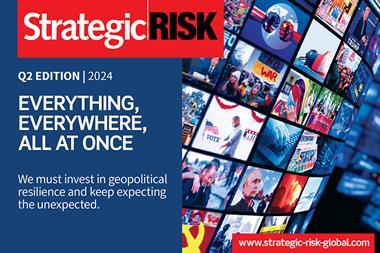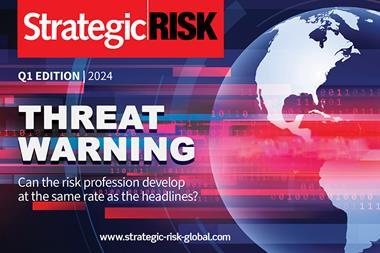Transforming risk strategy from the middle
What’s the playbook for today’s modern risk manager? This is one of the questions we wanted to answer in Risk Decision’s second whitepaper in our Risk Intelligence series.
The Snowball Effect, is an examination into the role of middle managers in today’s organisations, from a risk perspective. Gathering insights from thought leaders and global risk experts around the world, we asked how we engage with and connect risk across our organisations, in an increasingly complex, uncertain environment, as we emerge from Covid-19.
We found that, too often managers sitting at the heart of organisations find themselves making decisions in isolation, disconnected from other decision-makers and with a limited vision of the bigger picture.
At the same time, we know the neglected middle can hold the key to greater opportunities, a more connected, solutions-driven way of thinking and more significant success for the long-term.
The Snowball Effect’s central premise is that the opportunity starts from individual ideas, gathering knowledge, connecting people and collaborating to solve problems and deliver innovative solutions.
It’s seeing risk in terms of opportunity, agility and shaping the future, rather than purely risk registers and processes. Why does this shift in risk need to come from a well-supported middle and, what this Snowball Effect approach means for the future of risk?
Effective organisations build risk thinking into their DNA
Six core pillars shape this new narrative. Organisations can apply them to develop a future-focused risk strategy.
Make risk a behaviour, not a process - Risk is no longer limited to a set of procedures or registers. It has become a culture led by a way of thinking, a set of behaviours that have shifted into a solutions-led space.
For risk intelligence to thrive at the centre of an organisation, we need transparent and open cultures, with realistic performance reporting where people feel safe to challenge KPIs and data. Ensuring initiatives, programs and projects are set up with scopes that are manageable and have, clear gated decision-making will also drive accountability and visibility.
Historical behaviours can often hold organisations back too. While understanding why recent events have brought resilience to the fore, our experts called for balancing this with a more future-focused approach.
The last 18 months have shown us that the past can’t always be a predictor for the future. Encouraging middle management to explore new ideas - technology, diversity, changing markets – and identifying ways to pivot, prevents that fear of the unknown and missed opportunities.
Collaboration as a new language for risk - Positive communication is another facet that today’s risk professionals should embrace, as it plays an essential part in cultivating a culture of collaboration. This is even more important in an age where remote working has been normalised.
Powerful communications skills will set a manager apart, and organisations are seeing the most success when managers can clearly articulate their goals and how to achieve them strategically.
Forward looking managers are stepping out of working in silos, building their own networks and seeking out better ways of doing things. Which is where collaboration comes in.
Risk maturity matters - Across the board, our findings recognised the value of risk maturity as a primary ingredient of success – particularly where their organisations had a deep desire to drive change.
Risk maturity also supports a greater degree of self-governance. By engraining risk in your culture, it becomes less about managing negative threats and more about identifying and seeking out positive opportunities or alternatives.
Embedding risk effectively - Embedding risk authentically and robustly into organisations is how The Snowball Effect gains real traction. This requires moving beyond the mindset of having someone else ‘do’ risk for us.
Ultimately, you and I, our teams, are risk managers; we all manage risk/s every day. Yes, risk professionals are there to help put some rigour into what we do and how we do it, but effective organisations will build risk thinking into their DNA.
Start with education - Education is a key starting point, so that leaders and teams can make a meaningful connection with risk data, reports and where this sits in the business. By encouraging that curiosity and understanding, individuals know their own role in having a holistic risk approach.
A better understanding of risk also gives individuals greater capacity to accept uncertainty as well as supporting ownership. When every risk has a confident owner, it will be shared, mitigated, and ultimately, resolved. This form of self-governance becomes a powerful enabler.
Normalising risk decisions
If we saw a major trend last year, it’s that organisations applying a risk mind set at all levels can side-step avoidable crises. This isn’t about being risk averse, but understanding the impact and consequence of both taking action, as well as not taking action.
Both are a decision that can have positive or negative outcomes, and ultimately, The Snowball Effect of not making a decision can also become a threat.
Success happens when we reframe the understanding of positive risk in terms of success outcomes. How can you broaden the conversation and move the discussion from risk management to enabling leaders at all levels to make better decisions?
It’s this final point that emerges as particularly potent. It’s time to get people talking constructively about risk - make it fun and exciting to talk about the future and re-imagine the opportunities of collaboration, innovation and connected thinking.
Risk intelligence is embedded in outcome-focused decision-making – providing the glue in a fully functional risk intelligent world. And when it’s embedded across the whole organisation – in a momentum gathering Snowball Effect – it reveals the art of the possible. And it’s here that risk becomes a creative force – for a new, connected future.
Val Jonas is CEO of Risk Decisions




















No comments yet